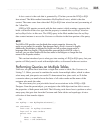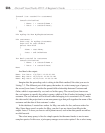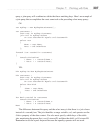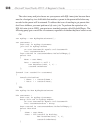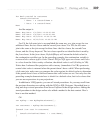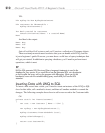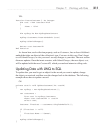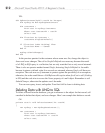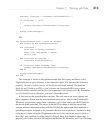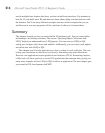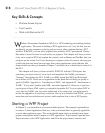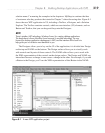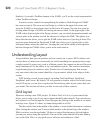
Chapter 7: Working with Data 213
Customer firstCust = customers.SingleOrDefault();
if (firstCust != null)
{
myShop.Customers.DeleteOnSubmit(firstCust);
}
myShop.SubmitChanges();
}
VB:
Sub DeleteCustomer(ByVal custID As Integer)
Dim myShop As New MyShopDataContext
Dim customers =
From cust In myShop.Customers
Where cust.CustomerID = custID
Select cust
Dim firstCust As Customer =
customers.SingleOrDefault()
If (firstCust IsNot Nothing) Then
myShop.Customers.DeleteOnSubmit(firstCust)
End If
myShop.SubmitChanges()
End Sub
This example is similar to the update example that did a query and then a call to
SingleOrDefault to get a reference to the requested object. You then use the collection
property, Customers in this case, to call the DeleteOnSubmit method. You need the
check for null (Nothing in VB), or you’ll receive an ArgumentNullException when
DeleteOnSubmit executes and the firstCust argument is null (Nothing in VB). Remember
to call SubmitChanges; otherwise, you won’t delete the record.
A final note on the preceding three sections. The code runs in an insert, update, and
delete sequence. Notice how the insert methods return an int, which is the CustomerID.
Whenever you perform a query from a database, you’ll often want to get the ID field for
the record at the same time. The reason is that the ID is unique to that one record and
you can perform subsequent actions with the ID. Both the update and delete methods in
preceding examples accepted an int parameter that was used to perform a database lookup
of the record. Again, using the ID guarantees that we’ll only return one record, which is
also why I was confident in calling SingleOrDefault. Since this chapter is about data, I
purposely don’t show you how the program handles that ID. However, you’ll see IDs being



